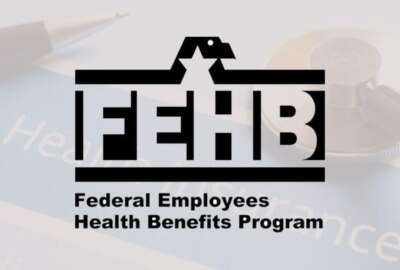How Medicare Part D will work in upcoming USPS insurance program
OPM’s final regulations for the Postal Service Health Benefits program locked in rules on Medicare Part D prescription drug coverage for USPS annuitants.
With a few weeks left before Open Season begins, the Office of Personnel Management is putting the final touches on how it’s planning to implement the Postal Service Health Benefits (PSHB) program for the USPS.
OPM’s final regulations for the PSHB program, which it published last week, detailed many technical factors for running the program. The PSHB will cover nearly 2 million USPS employees, retirees and their family members starting in 2025.
One part of the final regulations, which gained attention from many stakeholders, clarifies how Medicare Part D and prescription drug coverage will function for Medicare-eligible USPS annuitants and family members. According to OPM, PSHB plans are required to integrate Medicare Part D and offer prescription drug coverage to eligible Postal annuitants through what the program calls an “Employer Group Waiver Plan” (EGWP).
During Open Season, all Medicare-eligible Postal retirees will be automatically enrolled in an EGWP through the PSHB program. The EGWP will include prescription drug coverage through Medicare Part D. Individuals who are not eligible for Medicare, such as those living overseas, will get prescription drug benefits through their PSHB plan.
Notably, according to the final rule, Medicare-eligible USPS enrollees who opt out of Part D coverage will lose access to any underlying prescription drug coverage through PSHB. Despite concerns that arose in reaction to the proposed regulations, OPM maintained the same plans it initially proposed for opting out of Part D.
“OPM appreciates these comments and the thoughtful concerns they raised,” OPM wrote in the final rule. “OPM believes that its proposed approach — namely, that Part D-eligible Postal Service annuitants and their eligible family members who opt out of the Medicare Part D plan offered by their PSHB plan will lose prescription drug benefits under their PSHB plan — is most consistent with the [Postal Service Reform Act] and its policy goals.”
There will also be “seamless coordination” between PSHB and Medicare, OPM said, and the cost of Part D will be included in the PSHB premium. In other words, Medicare-eligible USPS retirees who opt out of Part D coverage would pay the same premium rate, but lose their prescription drug benefits.
For that reason, OPM said it expects “very few” USPS annuitants and their family members to opt out of Medicare Part D.
“The vast majority of individuals eligible for Part D will be better off retaining their PSHB prescription drug coverage,” OPM wrote.
Concerns on “removal of choice” for USPS retirees
After reviewing OPM’s final rule, the National Active and Retired Federal Employees Association (NARFE) called into question what the organization said was a “removal of choice” for prescription drug coverage for Medicare-eligible Postal retirees.
In an Oct. 28 letter to OPM, NARFE National President William Shackelford said there may be some circumstances where individuals find a PSHB plan to be a better alternative to a Medicare Advantage plan. For instance, some enrollees may consider opting out of Part D to avoid Income-Related Monthly Adjustment Amount (IRMAA) charges, or to be able to use prescription drug coupons.
“If the drug-cost-lowering benefits of the [Medicare PDP] coverage for the individual are outweighed by income-based Medicare premium surcharges or the inability to combine drug company discounts with insurance coverage, some Postal retirees could be better off retaining their PSHB plan drug coverage,” Shackelford wrote. “Yet OPM’s final rule forces these Postal retirees to accept the costlier option or lose drug coverage through PSHB altogether.”
Some federal benefits experts, however, have said even when taking into account IRMAA charges and drug coupons, the cost savings are unlikely to offset the benefits of staying in Medicare. From a cost perspective, some experts have said Postal retirees are usually better off keeping Medicare Part D.
Some flexibilities added to help fix “errors”
Generally, Postal enrollees will only be able to make changes to their enrollments during Open Season or if they experience a qualifying life event, such as a marriage or the birth of a child. Outside of those occasions, PSHB enrollees will maintain their selected enrollments for the entire 2025 plan year.
But several commenters on OPM’s proposed PSHB regulations had raised concerns about the possibility of some annuitants opting out of Medicare Part D without realizing the full consequences — that they would lose prescription drug coverage, while paying the same premium rate.
In the PSHB final rule, OPM made one adjustment to try to combat what the agency said is a “high risk of confusion” from USPS annuitants on the rules around Medicare Part D. The new flexibility included in the final rule aims to prevent “potential consequences” that Medicare-eligible annuitants may face based on their decisions during Open Season.
OPM said annuitants who opt out of Part D “due to an error” will potentially have some flexibility to change their enrollments outside Open Season. If it’s determined that there was an enrollment error, the participant would get 90 days, or in some cases longer, to make a different selection.
OPM did not specifically define what an “error” would entail, but said that it will use the PSHB enrollment flexibility “broadly” for the initial plan year for the PSHB program. The flexibility, however, is limited only to new enrollments in a Part D EGWP, OPM said.
“OPM seeks to ensure that any individual who opts out is doing so based on an informed understanding of the consequences and that anyone who opts out in error can have their Part D EGWP enrollment corrected,” OPM wrote.
During Open Season, which runs this year from Nov. 11 to Dec. 9, Postal employees and annuitants will have time to review their enrollments and, if they choose, make changes to their health insurance options. Federal Employees Health Benefits (FEHB) program participants are also able to take a look and make changes to their enrollments during Open Season.
Postal participants who don’t make a selection during Open Season will be automatically enrolled into the same plan they had through FEHB, as long as the same carrier is part of the new PSHB program. If there’s not an equivalent plan option, Postal participants will be automatically enrolled in the lowest cost option that they’re eligible for.
Copyright © 2025 Federal News Network. All rights reserved. This website is not intended for users located within the European Economic Area.
Drew Friedman is a workforce, pay and benefits reporter for Federal News Network.
Follow @dfriedmanWFED





